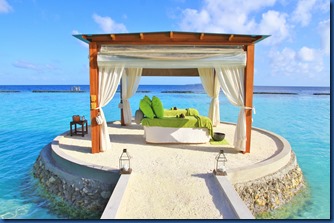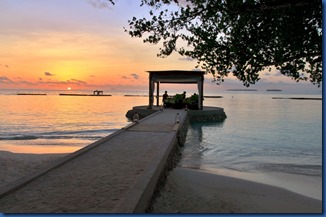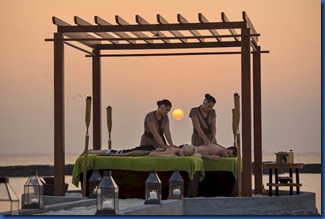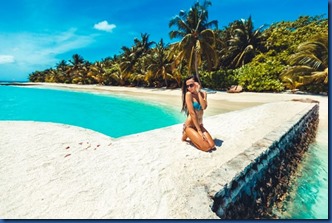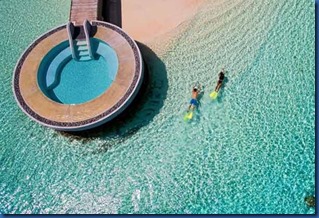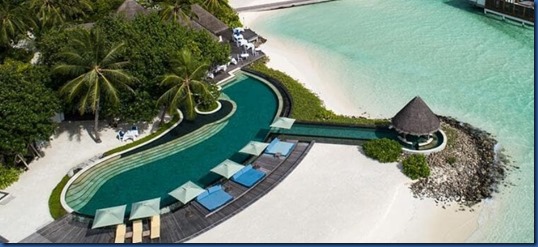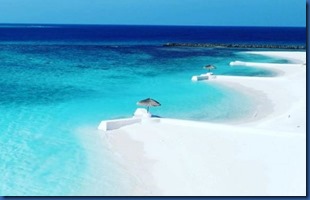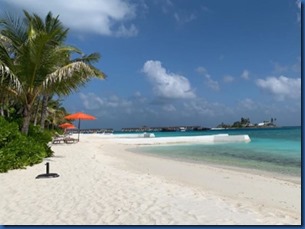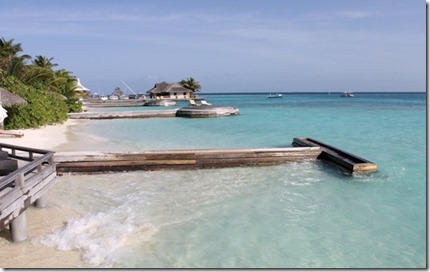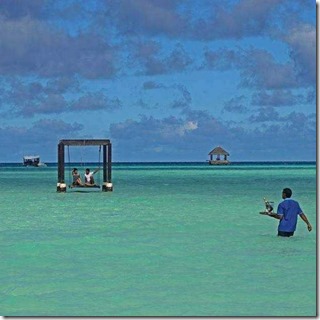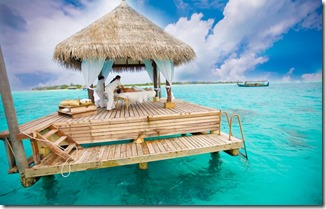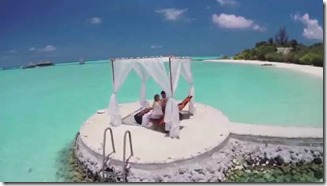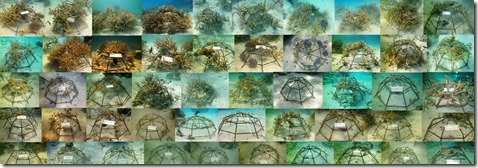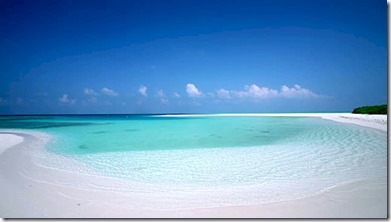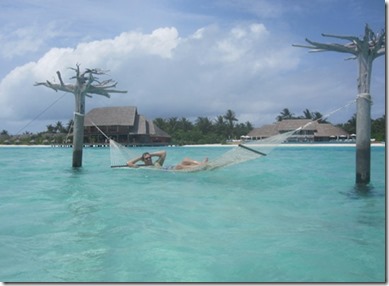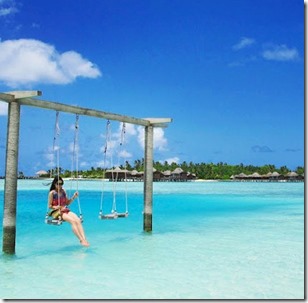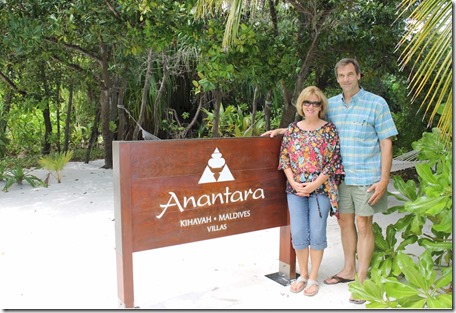Perhaps the most memorable spa treatment I ever had was an thai massage on Kurumba’s overwater platform. And Kurumba has expanded their overwater treatment areas to one of their groynes to provide an “on the beach” and “over water” experience at the same time.
10 Groyne Uses
The idyllic image of a tiny Maldivian island is a drop of sand in the middle of the ocean with a few palm trees. However, Mother Nature (aided by King Neptune) has a millennia-old habit of tossing that sand all over the sea at its whim. So resorts have introduced a few erosion prevention methods to keep their island intact. For vista purists, these man-made constructions – known as “groynes” – are a blot on the otherwise perfect seascape, but they are essential to preserving the islands that everyone wants to visit. What I applaud are the properties who embrace this imposition by leaning into it for a silver lining. Putting these promontories to good use and even aesthetic appeal…
1. Beach – Lily Beach: A beach beyond the beach so lounging in the sand above the water instead of just next to it (see above).
2. Spa Treatment Area – Kurumba: For the closest-to-water massage you will find.
3. House Reef Entry – Lily Beach: If it is going to protrude out into the ocean, then take advantage of that access.

4. Lagoon Privacy – Nike: The same groynes that protect against erosion can protect against prying eyes when you go for a dip in front of your beach villa.
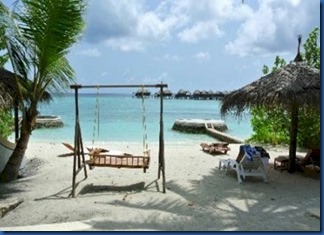
5. Lounging – Taj Exotica: If you can’t have you own over-water villa, you can still lounge over water here.
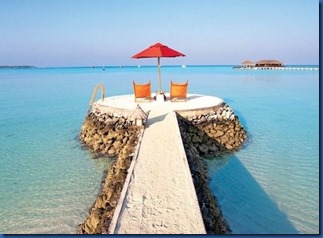
6. Pool – Huvafenfushi: If you want to swim “in” the ocean without being “in” the ocean.
7. Pavillion – Centara Ras Fushi: A little sun protection for the erosion protection.
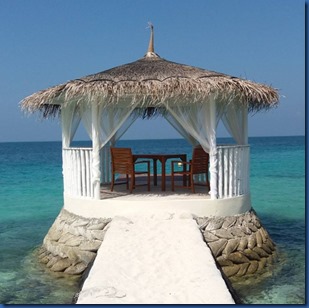
8. Dining – W Retreat: For a private meal away from your island which is away from it all itself.

9. Wedding – W Retreat: For an outstanding nuptials…out standing in the ocean.

10. Mini Island– OZEN Reserve Bolifushi: For the truly iconic plot-of-sand-and-palm-tree…all you need is a message in a bottle.
Best of the Maldives: Groyne Pool – Four Seasons Kuda Huraa
Traditionally, groynes (artificial promontories built to inhibit erosion by disrupting the currents which wash away the island) have been quite crude functional affairs, but in recent years resorts have been turning eye sores to sights for sore eyes with an array of décor and uses. Four Seasons Kuda Huraa’s pool featured in Instagrammer Miss Angie Villa’s post is so similar to one in design, that I think it sets the blueprint for someone converting a proper groyne into this design.
Best of the Maldives: Beachy Groynes – OBLU Select Sangeli
long grappled with the ocean shifting the sands all over the place historically. The properties there have figured out a variety of means for reducing this erosion with sea walls, groynes and other measures to address the impact of currents.
For many guests, these protruding measures can detract a bit from the archetypal image of a round plot of sand in the middle of the ocean. Some creative resorts have made lemonade from these aesthetic lemons by dressing up these structures in a number of way (many of which I have shared and now have collected in the new tag of for “Groynes”). I like the approach by OBLU Select Sangeli to smooth the groynes (as opposed to making piles of rocks) and painting them a brilliant white to blend in with the adjacent coral sand beaches.
Best of the Maldives: Wooden Groynes – Baros
One irritation to the most discerning Maldive aficionados are the “groynes”. Water defences that extend perpendicularly to the shoreline to impede erosion. The purists feel that such structure detract from the natural beauty of the pristine beach and the azure waters. And certainly and beach without them is nicer than a beach with them. But in many cases, a beach without them would be no beach at all. The natural currents would have washed them away.
In addition to their island preserving utility, they can also have certain charms and other benefits. They can be a handy way to enter the water for snorkelling, sometimes right at the house reef “drop off”. They serve as reefs themselves attracting an array of colourful sea creatures (we have often found lots of moray eels hiding in the crevasses of these structures. They can also provide a handy romantic dining spot right over the water.
Baros has taken the extra step of making the structures themselves a bit more aesthetically pleasing by investing in wood cladding. It does give them a bit more style and visual appeal. And for some (see photo above), they too have embraced their silver linings by setting out deck chairs and making them a feature not a bug.
Best of the Maldives: Beach Dining – Shangri-La Villingili
We always describe the Maldives to people who have never been as “that iconic image of a plot of sand with a palm tree…1000 of those!” The diminutive sandy dots in the middle of mill pond still lagoons provides an intimacy with a gently inviting ocean. When we first visited, the resorts all sequestered us into dining rooms at mealtime. Eventually we asked if we could move our table out onto the beach by the water and they were happy to oblige. By the end of the week, a bunch of other diners had followed our lead and joined us under the stars with the mini waves lapping nearby.
These days all resort understand the charm of beach dining and offer a number of seating areas on the sand close to the water. But no standard dining venue (as opposed to specialty beach dining experiences) get you closer to the water than Shangri-La Villingili’s Javvu restaurant. Partly this proximity is due to a bit of erosion that has brought the water closer to the dining as much as the dining has approached the water. The tables are all set under a canopy of shore lining palms to that cosying up the seaside experience.
Best of the Maldives: Underwater Sea Barrier – Coco Palm Dhuni Kolhu
Resort islands face all sorts of new environmental challenges from COTS to rising sea temperatures taking their tolls on the coral reefs. But an endemic and ancient plague on the islands are the simple currents shifting the precious sands of their tiny plot of real estate all over the place. Of the over 100 active resorts, nearly 40 have either rock groynes (still vertically out from the beach) or sea walls (sit horizontally parallel to the beach)…or both…to limit this natural erosion. Unfortunately, these measures to keep the sand in place can keep guests away who prefer an unadulterated ocean vista.
Some resorts have gotten clever about turning adversity to advantage dressing their groynes up as everything from lounging areas to wedding pavilions. But Coco Palm Dhuni Kolhu is the first resort to address the less slightly seawalls by introducing ‘turtle-friendly’ submerged ones that wouldn’t impair the view over the water…
“This project consists of a ‘belt’ of breakwater walls built in the North Eastern side of the lagoon, at a distance of 100 meters from, and parallel to the shore line. The purpose of the wall is to control the sand movements by reducing the impact of rough seas and the strong circulating currents. The first phase of the project consists of 9 walls, each of 25 meters in length and with gaps between each wall to allow the passage of turtles and fish as well as a controlled amount of currents. With Coco Palm Dhuni Kolhu being a regular green sea turtle nesting ground, these gaps are very important for them to navigate their way onto the island. The wall is built with eco-friendly coir gunny bags filled with a mixture of sand and cement ; the bags will eventually dissolve naturally, leaving the cement ‘blocks’ in place. We are in phase one of this project and 5 walls are now complete, with the 6th at 90% and the remaining 3 all 50% completed. We have already started observing a stable beach near our Lagoon Villas which used to be severely affected. The image above is from a stay a couple of months ago in October, and the thin line that you see near the Lagoon Villas is the breakwater wall that has progressed.”
Sometimes the best resort innovations are hidden just beneath the surface.
Best of the Maldives: Lagoon – Taj Exotica
I’ve lauded the Taj Exotica lagoon in my tour piece (“Turquoise Extremica”), but I do think it is worthy of a special “Best of the Maldives” commendation. Theirs is one of the biggest lagoons in the entire Maldives at over 200 acres. It is the biggest we have seen since Velassaru and LUX South Ari Atoll (bigger than Velassaru and more sheltered than LUX).
But Taj Exotica doesn’t just rest on its lagoon laurels, but instead has invested in it extensively to maximise the lagoon experience. As such, it is probably the most accessorised lagoon we have come across. I already highlighted their extensive coral frame initiative (see photo bottom). It includes not only the obligatory lagoon hammock, but also a lagoon swing (see photo above). The resort also has built special over water pavilions (see below) both attached (below) and detached (above) from the island. And it has even dressed up its beach preserving groynes (see below).
The horizon to horizon stretch of cyan scenery is not just something to gaze at, but also something to immerse yourself in, ever if you don’t want to get wet.
14 Lagoon Accessories
The definitive activity in the Maldives might be snorkelling, but the definitive “look” of the Maldives are its lagoons. But a lagoon is more than a pretty pictures. Here is my lakers dozen Lagoon Accessories to make the most tranquil lagoon as active and colourful as any house reef…
2. DECK – Baros
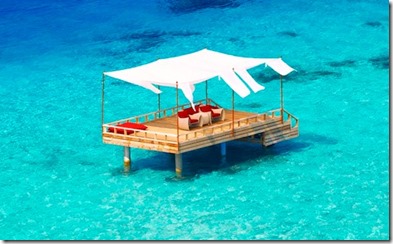
3. RAFTS – One & Only Reethi Rah

4. CORAL TOPIARY – Four Seasons Landaa Giraavaru
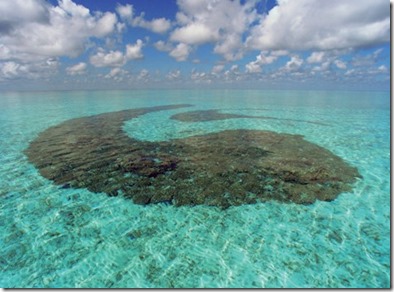
5. CLIMBING WALL – Hideaway Beach
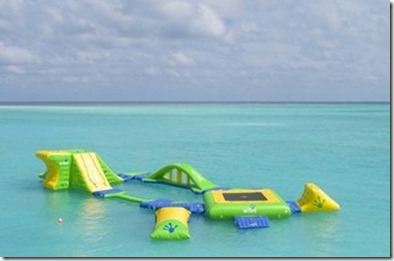
6. DINING AREA – Angsana Ihuru

7. CATCH – Kurumba
8. SHADED DINING – Centara Ras Fushi
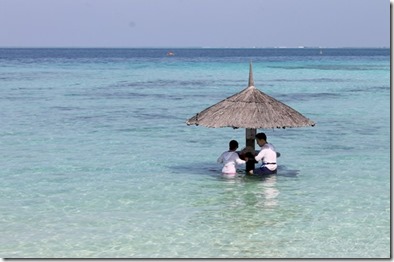
9. DIRECTIONS – Anantara Kihavah
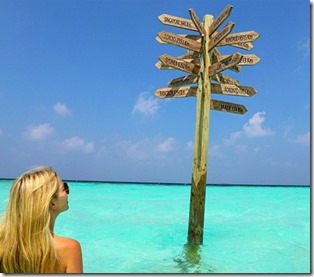
10. WINE BAR – Kurumba
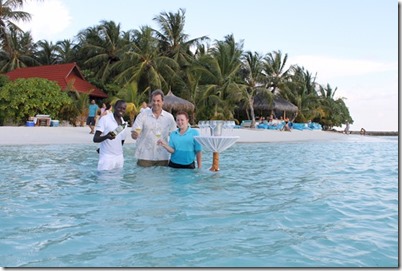
11. POOL – Velassaru
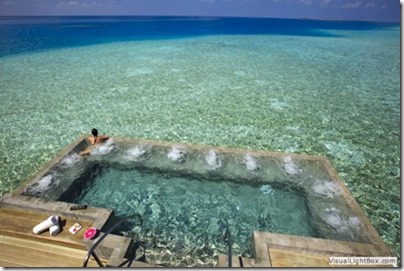
12. VOLLEYBALL – Angsana Velavaru
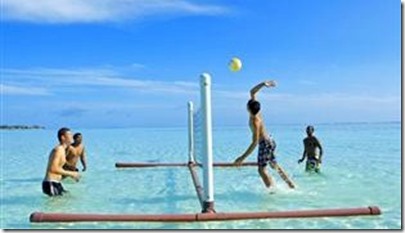
13. GROYNE ISLAND – Maafushi

Maldives Tour 2014 – Day 10: Anantara Kihavah Villas
Mary Poppins of Maldives resorts. ‘Practically perfect in every way.’ That’s Anantara Kihavah.
There are very few resorts that tick as many boxes as Kihavah does. Some islands are great, and some resorts are great. Finding great islands with great resorts on them is by definition rarer.
The crème de la crème resorts tick a number of key boxes for service, food, styling, etc., but the “Super Premiums” (aka “5+ Stars”) take all of the criteria a step further. Not only that, but they also have one special, added requirement – the “wow” item. The “wow” is not just an abstract effect of quality and style, but it is a very tangible thing that is the first thing you brag about when you get home. In the Maldives, the most common “wow” is an underwater feature, but it can be something like a marine discovery centre or some other distinctive experience.
The Kihavah “wow” is its underwater ”Sea” restaurant. In many respects, it surpasses the iconic one at Conrad. Conrad’s Ithaa restaurant is in the lagoon, while Kihavah’s Sea is perched on the precipice of its house reef drop-off. And what a drop off it is. Plunging straight down for 30 meters into the deep blue abyss. Novice snorkelers, unconfident swimmers, and of course land-lubbers don’t usually get to experience the aquatic thrill of the reef drop off, but Kihavah’s dining portal give it a drop-off everyone can experience.
And that’s where the crème de la crème islands star. With a vibrant and easily accessible house reefs. Kihavah has a particularly fine house reef which you enter straight from the jetties. In addition to its reef, I was quite fond of Kihavah’s modest size. I like the smaller islands that have an intimate and isolated feel to them. But the frosting the cake was Kihavah’s dazzling circumambient beach. One broad, soft, white strip of sand that encircles the entire island. As my wife regularly reminds me, such beauty is not without effort and Kihavah takes considerable effort to groom and primp. But instead of beach defenses (like unsightly groynes and seawalls), instead Kihavah lets nature take its course and then each year they rebuild the section of the beach (typically by the pool) which gets eroded.
Kihavah scores more “outstanding” marks in more areas than all but a few places I have visited in the Maldives. No surprise that I came away from my visit with 19 new “Best of the Maldives” candidates.
A must candidate for any Maldives connoisseur.

